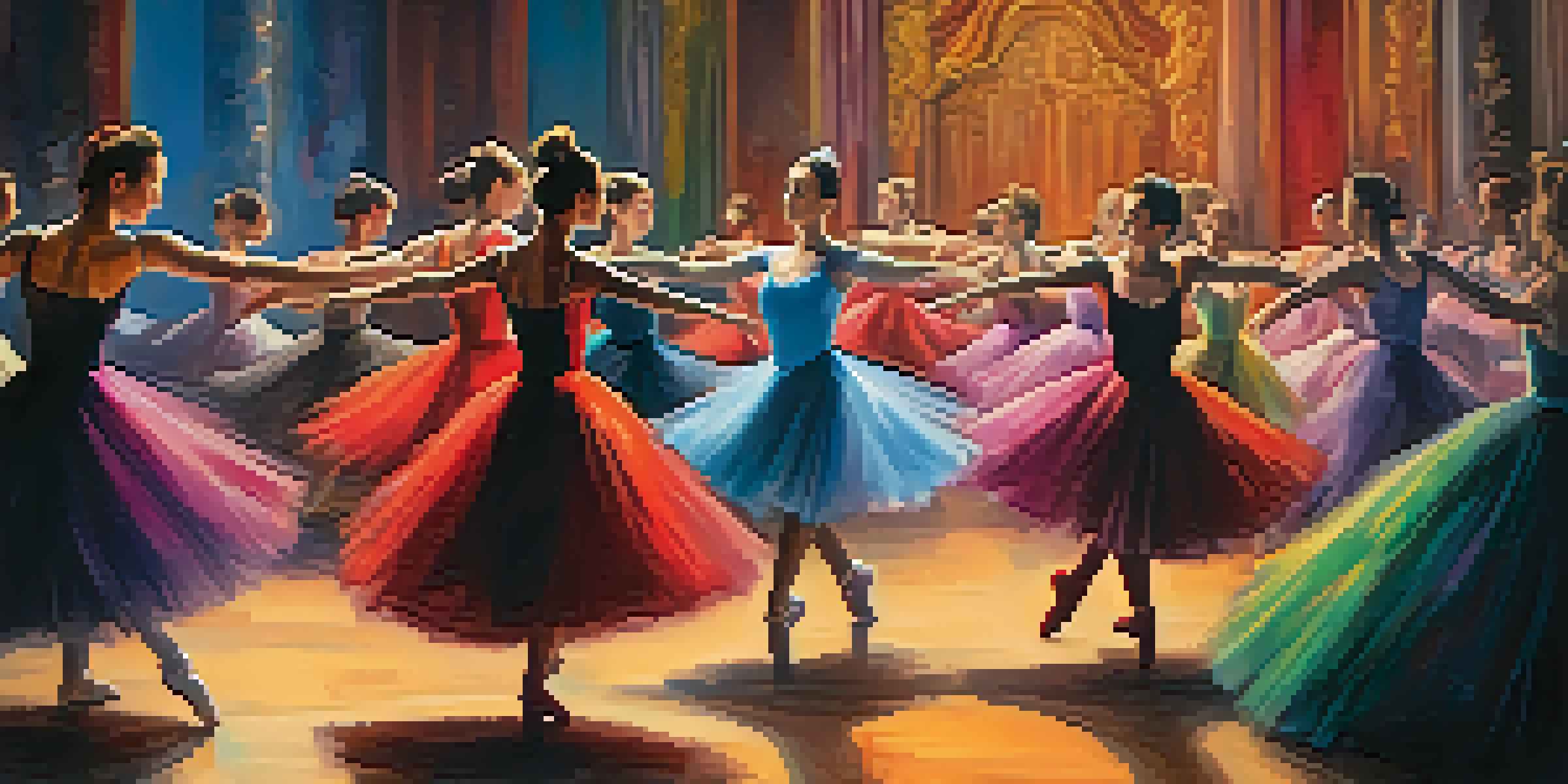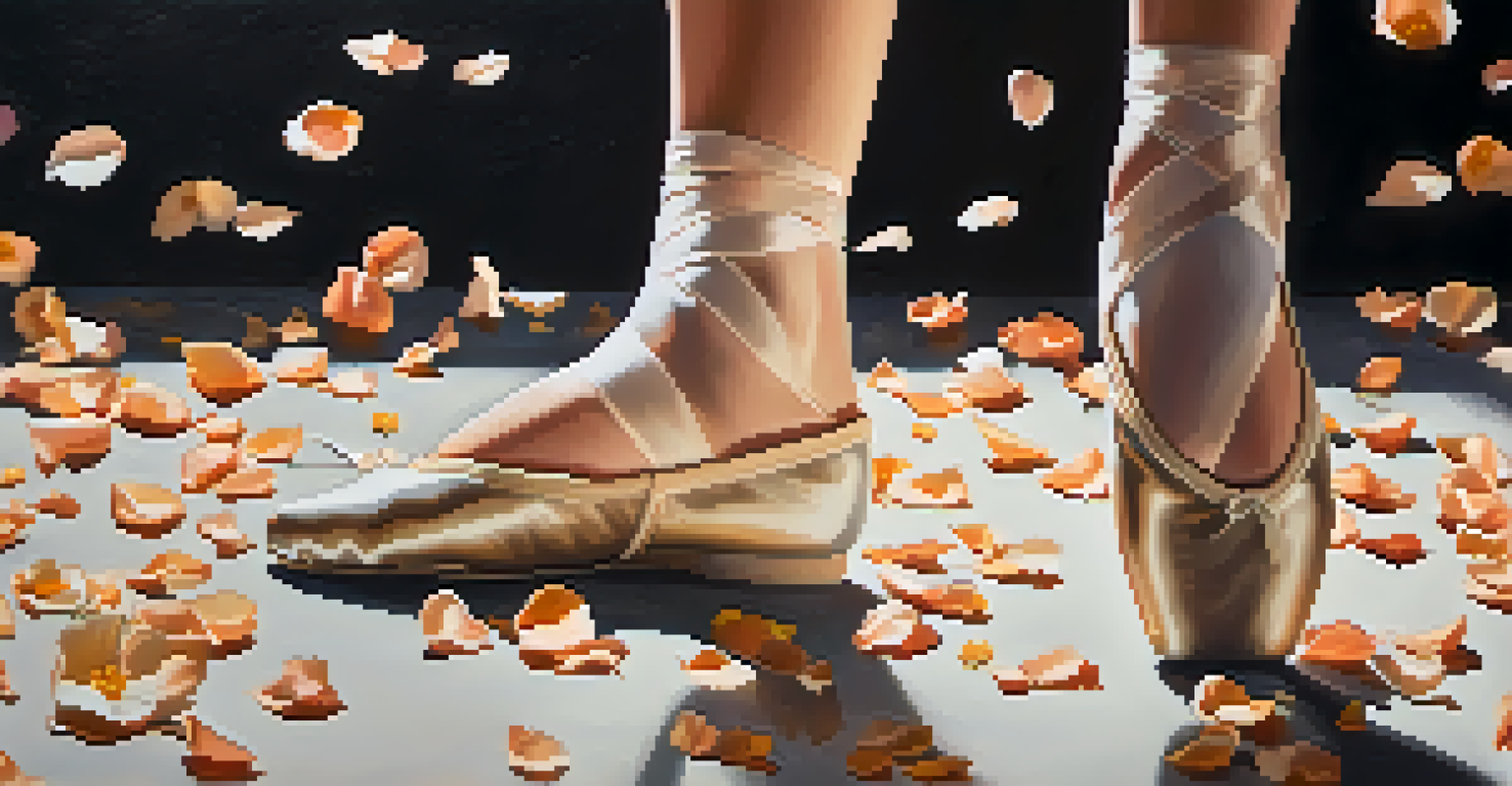Ballet Against Oppression: A Study of Political Ballet

What is Political Ballet and Why Does It Matter?
Political ballet intertwines the art of dance with social and political messages. By using movement to convey emotion and narrative, choreographers can highlight injustices and inspire change. This unique form of expression allows artists to engage audiences on issues that may be uncomfortable or overlooked.
Dance is the hidden language of the soul.
The impact of political ballet is profound; it not only entertains but also educates. Through the combination of storytelling and physicality, audiences can connect with themes of oppression, resilience, and hope. This connection can amplify awareness and motivate individuals to take a stand.
As we dive deeper into the world of political ballet, we uncover its history, significant works, and the artists who have bravely used this medium to challenge societal norms. Understanding these elements is essential to appreciating its role as a vehicle for change.
The Historical Context of Ballet as a Political Tool
Ballet has deep roots in political expression, dating back to the courts of Renaissance Europe. Initially, it was used to celebrate power and wealth, but as society evolved, so did its themes. Dancers began addressing social issues, turning the stage into a platform for commentary.

During the 20th century, major geopolitical events prompted ballet companies to respond through their art. From the Russian Revolution to the Civil Rights Movement, choreographers infused their works with messages of resistance and solidarity. These performances became a way for artists to assert their voices against oppression.
Political Ballet as a Change Agent
Political ballet intertwines art and activism, using dance to highlight social injustices and inspire audiences to take action.
This historical evolution illustrates how ballet has adapted to reflect the changing political landscape. By examining past performances, we can gain insight into how dance can provoke thought and inspire action in different contexts.
Iconic Works of Political Ballet: A Closer Look
Several ballets have left a significant mark on the political landscape, such as 'The Rite of Spring' by Igor Stravinsky. Premiering in 1913, its controversial themes sparked riots and debates, showcasing how ballet can challenge societal norms. This piece remains a prime example of dance as a form of protest.
Art must be an integral part of society; it must reflect what is happening in the world.
Another notable work is 'A Midsummer Night's Dream' by George Balanchine, which has been reinterpreted to comment on gender dynamics and class struggles. By intertwining classical ballet with modern themes, these performances resonate with contemporary audiences while addressing timeless issues.
These iconic works demonstrate the potential of ballet to convey powerful narratives. As audiences engage with these stories, they are encouraged to reflect on their own experiences and the world around them.
Choreographers Who Challenge the Status Quo
Choreographers like Martha Graham and Pina Bausch have made significant contributions to political ballet. Graham's works often explored themes of identity and societal expectations, pushing boundaries and challenging audiences to think critically. Her innovative approach to movement redefined what ballet could express.
Pina Bausch, on the other hand, fused dance and theater to create emotionally charged performances that addressed human relationships and social issues. Her unique style, often described as 'dance theater,' opened new avenues for political expression within the dance community.
Historical Roots of Political Ballet
Ballet's evolution as a political tool showcases its ability to address societal issues, from Renaissance courts to modern movements.
These visionary artists remind us that ballet is not just about technique and beauty; it can also serve as a powerful form of activism. Their legacies continue to inspire new generations of choreographers to use their art for social change.
The Role of Audience Engagement in Political Ballet
Engaging audiences in political ballet is crucial for its impact. Performances are not just about showcasing talent; they invite viewers to reflect on the issues presented. This engagement can lead to meaningful discussions and inspire action beyond the theater walls.
By incorporating elements that resonate with contemporary social issues, choreographers can create a sense of urgency. Audiences may leave feeling compelled to advocate for change or become more informed about the topics addressed in the performance.
This dynamic relationship between the performance and the audience is what makes political ballet so powerful. It transforms spectators into active participants in the dialogue surrounding oppression and social justice.
Ballet's Global Influence on Social Movements
Across the globe, ballet has played a role in various social movements. In countries facing political unrest, artists have used their craft to express dissent and solidarity. This global perspective highlights the universal nature of ballet as a means of resistance.
From the streets of Paris to the stages of Havana, dancers have organized performances that challenge oppressive regimes and advocate for human rights. These acts of defiance showcase the unifying power of art in times of struggle.
Audience Engagement Enhances Impact
Engaging audiences in political ballet transforms them from passive viewers to active participants in discussions around social justice.
The global influence of ballet in social movements serves as a reminder that art transcends borders. It has the potential to inspire individuals from diverse backgrounds to unite for a common cause.
The Future of Political Ballet: Trends and Innovations
As we look to the future, political ballet continues to evolve. New technologies and platforms allow choreographers to experiment with multimedia elements, enhancing their storytelling capabilities. This innovation opens up exciting possibilities for how political messages can be conveyed through dance.
Moreover, emerging voices from diverse backgrounds are enriching the narrative landscape of ballet. By incorporating various cultural perspectives, these artists are broadening the discussion around social issues and making political ballet more inclusive.

The future of political ballet is bright, filled with potential for new collaborations and groundbreaking works. As artists continue to push boundaries, we can expect to see the art form play an even more significant role in advocating for social justice and equality.